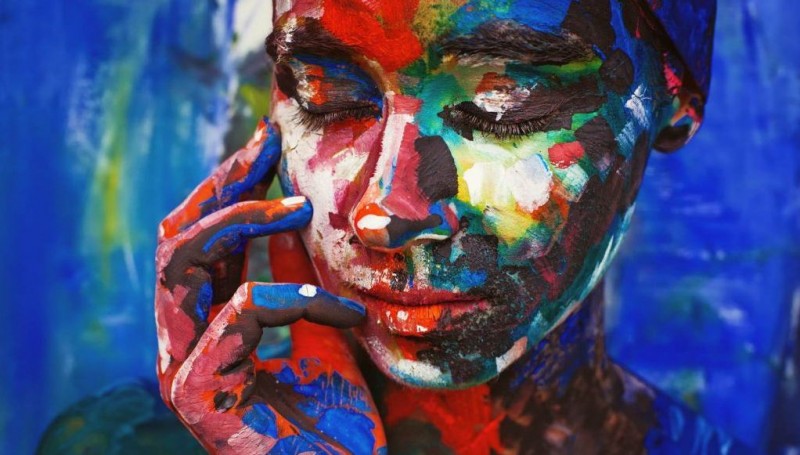
Introduction
In today's society, art and culture play a significant role in shaping our perceptions, values, and beliefs. One movement that has made a profound impact on contemporary society is Pop Art. Emerging in the 1950s and reaching its peak in the 1960s, Pop Art revolutionized the art world by celebrating popular culture and consumerism. This article explores the influence of Pop Art on contemporary society, examining its origins, key artists, and its lasting legacy.
1. The Origins of Pop Art
The Pop Art movement originated in the 1950s in Britain and the United States as a reaction against the dominant Abstract Expressionism movement. Artists sought to break away from the elitism and exclusivity of high art and embrace the popular culture that surrounded them.
2. Key Artists of the Pop Art Movement
Notable artists associated with Pop Art include Andy Warhol, Roy Lichtenstein, Claes Oldenburg, and James Rosenquist. These artists incorporated everyday objects, consumer products, and imagery from popular culture into their artworks.
3. The Themes and Techniques of Pop Art
Pop Art focused on themes such as mass production, consumerism, celebrity culture, and the media. Artists employed techniques such as the use of bold colors, repetition, collage, and the appropriation of images from advertisements and comic books.
4. Pop Art's Impact on Contemporary Society
Pop Art had a profound impact on contemporary society by blurring the boundaries between high and low culture. It challenged traditional notions of art and introduced new ways of perceiving and experiencing visual culture.
5. Pop Art in Fashion and Design
The influence of Pop Art extended beyond the art world and permeated into fashion and design. Its bold colors, graphic patterns, and playful imagery became popular in clothing, furniture, and interior design.
6. The Commercialization of Pop Art
Pop Art's embrace of consumer culture and popular imagery led to its commercialization. Prints, posters, and merchandise featuring famous Pop Art works became highly sought after, making art more accessible to the general public.
7. Pop Art's Influence on Advertising and Media
Pop Art's visual language and techniques greatly influenced advertising and media. The use of vibrant colors, bold typography, and repetition became prevalent in advertising campaigns, making products more appealing and memorable.
8. Pop Art and Social Commentary
Pop Art often served as a vehicle for social commentary. Artists used their works to critique political and social issues, such as war, consumerism, gender roles, and racial inequality, sparking important conversations within society.
9. Pop Art's Legacy in Contemporary Art
The legacy of Pop Art can be seen in contemporary art practices. Many artists today continue to explore themes of popular culture, consumerism, and mass media, building upon the foundations laid by the Pop Art movement.
10. Pop Art's Influence on Music and Entertainment
Pop Art's influence extended beyond visual art and impacted the music and entertainment industries. Artists like David Bowie, Madonna, and Lady Gaga drew inspiration from Pop Art's flamboyant aesthetics and its celebration of individuality.
11. The Global Reach of Pop Art
Pop Art transcended geographical boundaries and had a global impact. Its themes and techniques resonated with artists from different cultures, leading to the emergence of Pop Art movements in various parts of the world.
12. The Criticism and Controversies Surrounding Pop Art
Despite its widespread popularity, Pop Art faced criticism and controversies. Some critics argued that it celebrated consumerism without offering substantial critique, while others believed it commodified art and devalued traditional artistic practices.
13. Pop Art's Reflection of Society
Pop Art reflected the values, desires, and anxieties of its time. It captured the rapid changes occurring in society, including the rise of mass media, the consumer culture, and the growing influence of popular icons.
14. The Enduring Popularity of Pop Art
Even decades after its emergence, Pop Art continues to captivate audiences and remains a significant cultural force. Its vibrant and accessible aesthetics resonate with people from all walks of life, ensuring its enduring popularity.
Conclusion
Pop Art's influence on contemporary society cannot be overstated. Through its bold visuals and incorporation of popular culture, it challenged traditional notions of art and opened doors for new artistic expressions. From the realms of art, fashion, and design to advertising, media, and social commentary, Pop Art continues to shape and inspire the world around us.
Gujarat HC orders Teesta Setalvad to surrender in the morning
Tomato Trending: Expecting a Decrease in Tomato Prices soon
Twitter Takes Action Against Policy Violations, Bans Over 1.1 Million Indian Accounts